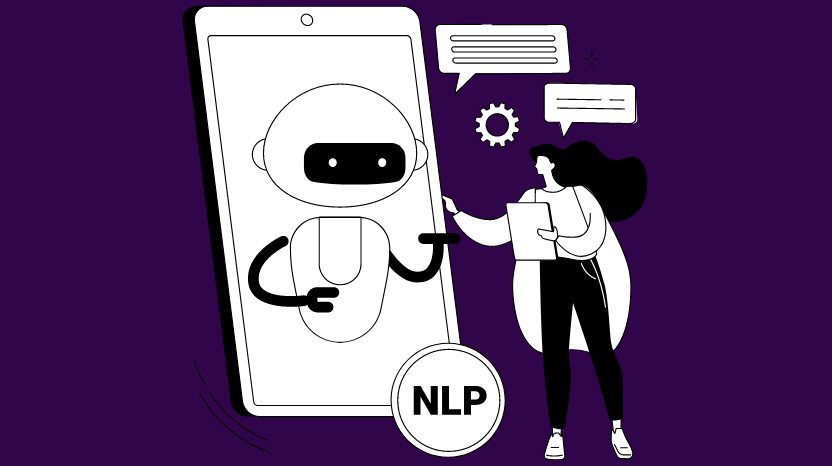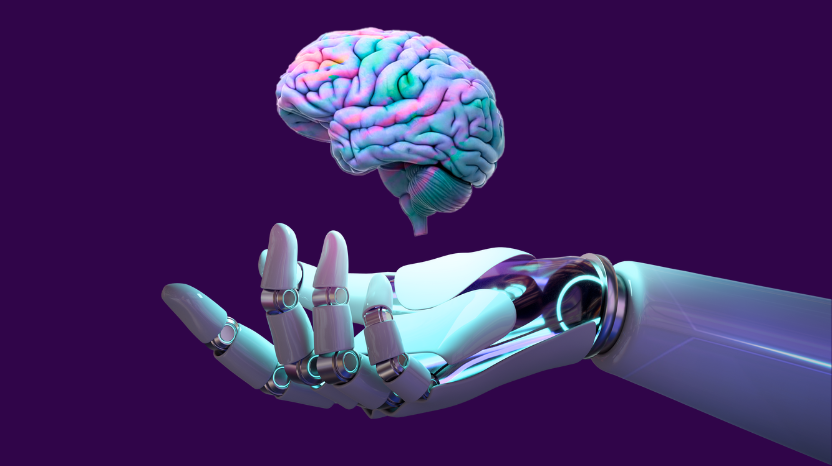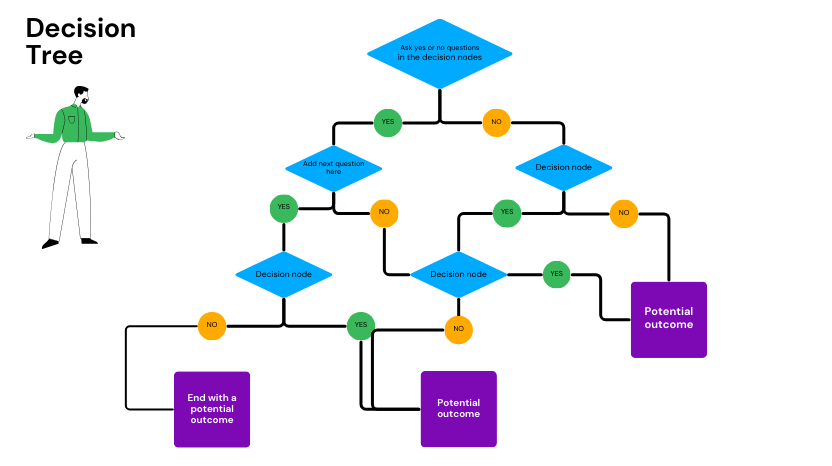What companies would never learn about their employees without AI
What really motivates employees? – This question is more relevant today than ever, especially in industries such as consulting and financial services, which rely on trust, expertise and personal relationships and are also under high pressure to innovate. Traditional employee surveys often only provide superficial answers. A study from the manufacturing industry clearly shows how companies can use AI-based Natural Language Processing (NLP) technology to delve deep into the actual experience of their employees – and gain concrete ideas for action.
The study: 40,000 open answers, intelligently analyzed
In a large-scale study, Zortify and Great Place to Work analyzed over 40,000 open-ended text responses from employees at industrial companies using NLP technology. Unlike multiple-choice questions, open answers allow an unbiased view of what is really important to employees. NLP makes these answers measurable, comparable and structurable in terms of content – e.g. via semantic cluster analyses.
The result:
Employees with low loyalty to the company speak significantly more often about poor leadership – even more often than about salary. Highly committed employees, on the other hand, mainly talk about team culture, appreciation and meaning.
The real game changer: experience as a management parameter
The key finding from the study:
“The employee experience must become the starting point and benchmark for all transformation activities.”
Marcus Heidbrink, Co-Founder and CEO of Zortify
With the help of AI, this experience can be systematically recorded and incorporated into decision-making processes for the first time. Companies can use an NLP tool to analyze tens of thousands of responses on the emotional state of employees and extract the most important topics, problems and moods from them. In terms of the diversity of opinions, this corresponds to the input from a large number of focus groups, the implementation of which would entail enormous costs.
Active listening with AI offers three key advantages, particularly in industries such as finance and services, which are experiencing major upheavals and a growing shortage of skilled workers:
1. Understanding instead of assuming
NLP tools not only recognize whether someone is dissatisfied, but why – in the employees’ own words. This enables differentiated, target group-oriented measures.
2. Culture as a lever for loyalty
The perception of values such as appreciation, innovation or tradition differs significantly between loyal employees and those who are willing to change jobs. Targeted action here strengthens emotional loyalty.
3. Shaping transformation effectively
The study highlights cultural factors such as participation, autonomy and communication quality as key retention factors. NLP technology helps to identify these in employees and turn them into strategic control variables – especially in hybrid, dynamic working environments.
Employee satisfaction in the financial sector: no reason to be complacent
At first glance, the financial sector performs well in recent studies when it comes to employee satisfaction – top 10 at kununu and at the top of the Pens Study 2024. The sector scored particularly well for corporate culture (4.26/5), working environment (4.22/5) and diversity (4.40/5). However, as is so often the case, first impressions can be deceptive. This is because the scores say nothing about increasing polarization within the sector:
- Job security in private banks is only 49% (vs. 70% in public sector institutions).
- Management deficits and work intensification are increasing despite rising salaries.
- Over 80 % of institutions report a shortage of skilled talent.
Conclusion
At a time when talent is more selective than ever and work pressure is increasing in many areas, it is no longer enough to conduct a survey once a year. If you want to retain your employees, you have to listen continuously. NLP technology makes this listening efficient, scalable and intelligent.
Employee retention starts with genuine participation – and AI provides the key.
You can download a detailed summary of the study from Zortify and Great Place to Work here.
73% of all talents are ready to make a move – but only if you do!
The shortage of skilled workers is reaching new record levels: according to a study by ManpowerGroup, 86% of German companies are struggling to find talent. When promising candidates suddenly drop out or are lured away by counter-offers, it’s not only frustrating but also expensive. Unfortunately, this is exactly what often happens
Personality vs. hard skills
Why companies often make the wrong decisions despite knowing better?
A new study of 110 HR experts clearly shows that the majority of companies are aware of the importance of personality and soft skills in recruiting. Many HR professionals are also aware of their own shortcomings when it comes to finding the right talent for the right positions.
Recruiting in transition: Why “Hire & Pray” is no longer enough
It is said that diamonds are only created under pressure. We wouldn’t agree with this saying when it comes to recruiting. Under pressure, our judgment suffers. Under pressure, suitable candidates are more easily overlooked or applicants are hired overhastily who later turn out not to be suitable. The cost of bad hires runs into the hundreds of thousands.
NLP in Business
How Natural Language Processing is Transforming Customer Service, Marketing, and Sales
As businesses become more customer-centric, understanding customer needs and wants is becoming increasingly important. Natural Language Processing (NLP) is a branch of Artificial Intelligence (AI) that is revolutionizing the way businesses interact with their customers. By analyzing language data, NLP enables businesses to gain a deeper understanding of their customers, improve communication, and automate processes.
Here are some ways that NLP is transforming customer service, marketing, sales, and even the workplace:
Improving Customer Service Interactions
NLP is being used to analyze customer feedback and interactions to improve the overall customer experience. By analyzing customer feedback in real time, businesses can identify common pain points and issues and address them promptly. NLP can also be used to automate customer service interactions through chatbots and virtual assistants, reducing wait times and providing 24/7 support.
Automating Marketing and Sales Processes
NLP is being used to automate marketing and sales processes, allowing businesses to personalize their messaging and improve customer engagement. By analyzing customer interactions and (meta)data, AI and NLP can generate personalized recommendations and product suggestions. This level of personalization can improve customer retention and loyalty, and increase revenue.
Gaining Insights from Unstructured Data
NLP is also being used to analyze unstructured data, such as social media comments and reviews, to gain insights into customer sentiment and preferences. By analyzing this data, businesses can gain a deeper understanding of their customers and adjust their marketing and sales strategies accordingly.
Challenges and Considerations
While NLP has many benefits for businesses, there are also challenges and considerations to be aware of. For example, NLP algorithms can be biased, reflecting the biases of their creators and the data they are trained on. This can result in unfair or discriminatory outcomes. Additionally, NLP may not always accurately capture the nuances of human language, leading to errors or misunderstandings.
NLP in business
At Zortify, we believe that natural language processing (NLP) is a critical tool in driving better decision-making through artificial intelligence. That’s why we’ve built our company around NLP and its applications in human experience management (HXM).
Our Zortify products are based on the latest research and practical expertise in Data & Computer Science, NLP, Visual Computing, Psychology, and People Analytics. We believe that this multidisciplinary approach is key to developing usable and explainable AI solutions that truly make a difference.
One of our primary applications of NLP is in making active listening scalable for organizations across Europe. Our technology enables individuals to express themselves in their own words, whether it’s for personnel selection, customer/employee feedback, or analyzing an entire organization’s culture. By leveraging NLP, we can capture and understand the nuances of human language in a way that wasn’t previously possible.
Conclusion
NLP is transforming the way businesses interact with their customers, enabling them to gain a deeper understanding of customer needs and wants, improve communication, and automate processes. As with any technology, there are considerations and challenges to be aware of. However, by using NLP responsibly and ethically, businesses can improve the overall customer experience and drive growth.
NLP 101: A Beginner’s Guide to Natural Language Processing
Natural Language Processing (NLP) is a field of study that focuses on analysis and synthesis of human language. NLP is a fascinating and rapidly evolving field with a wide range of applications, from chatbots and virtual assistants to sentiment analysis and machine translation.
AI vs. Human Intelligence
Examining the differences between AI and Human Intelligence, and how they can work together to drive Innovation. Artificial intelligence (AI) has been a hot topic in recent years, with advancements in technology and machine learning leading to significant improvements.
Building Trust with Explainable AI: Techniques and Approaches
As AI becomes more pervasive in our lives, it’s becoming increasingly important to understand how these systems work and to be able to trust their decisions. Explainable AI (XAI) is a growing field that aims to create more transparent and interpretable machine learning models.
XAI: Building Trust and Transparency in Machine Learning Models
As AI becomes more pervasive in our lives, it’s becoming increasingly important to understand how these systems work and to be able to trust their decisions. Explainable AI (XAI) is a growing field that aims to create more transparent and interpretable machine learning models. In this article, we’ll explore what XAI is, why it’s important, and how techniques such as decision trees and rule-based systems can be used to build more transparent and trustworthy AI systems.
Introduction
Artificial intelligence (AI) is increasingly being used in a wide range of applications, from chatbots to autonomous vehicles. However, as AI becomes more ubiquitous, concerns have arisen about its transparency and accountability. In particular, there is a growing demand for AI systems that are explainable. Meaning that they can be understood and interpreted by humans. This article will explore the concept of explainable AI, including why it’s important for building trust in AI systems. And how techniques such as decision trees and rule-based systems can be used to create more transparent and interpretable models.
What is Explainable AI?
Explainable AI (XAI) is a subfield of AI that focuses on developing methods and techniques to make AI systems more transparent and interpretable. The goal of XAI is to enable humans to understand the reasoning behind AI decisions and action. Which is critical for building trust in these systems. XAI is especially important in high-stakes applications. Such as healthcare and finance, where decisions made by AI systems can have significant consequences.
Why is Explainable AI Important?
The lack of transparency and interpretability in AI systems is a major obstacle to their widespread adoption. If people cannot understand how an AI system is making decisions or why it is taking a particular action, they are unlikely to trust or rely on that system. This is particularly true in applications where human lives or livelihoods are at stake.
Another reason why XAI is important is that it can help identify and mitigate biases in AI systems. Many machine learning models are trained on biased data, which can lead to discriminatory outcomes. By making AI systems more transparent and interpretable, it becomes easier to identify and correct biases in these models.
How can we achieve Explainable AI?
Several techniques and approaches can be used to achieve XAI. One common approach is to use decision trees. Which are a type of model that creates a tree-like structure of decisions and their possible consequences. Decision trees are easy to understand and can be used to trace the reasoning behind AI decisions.
Exemple of decision tree
Another approach is to use rule-based systems, which are sets of rules that define the conditions under which certain actions should be taken. Rule-based systems are often used in expert systems. Which are AI systems that simulate the decision-making capabilities of a human expert in a particular domain.
A third approach is to use model-agnostic techniques, such as LIME (Local Interpretable Model-Agnostic Explanations) or SHAP (Shapley Additive exPlanations). These techniques can be used with any type of machine learning model and provide local explanations for individual predictions.
Finally
Explainable AI is critical for building trust and transparency in AI systems. By making AI systems more transparent and interpretable, we can identify and correct biases, build trust with users, and ensure that AI is used ethically and responsibly. There are many techniques and approaches to achieving XAI, and organizations should carefully consider their options when implementing AI systems.
NLP 101: A Beginner’s Guide to Natural Language Processing
Natural Language Processing (NLP) is a field of study that focuses on analysis and synthesis of human language. NLP is a fascinating and rapidly evolving field with a wide range of applications, from chatbots and virtual assistants to sentiment analysis and machine translation.
AI vs. Human Intelligence
Examining the differences between AI and Human Intelligence, and how they can work together to drive Innovation. Artificial intelligence (AI) has been a hot topic in recent years, with advancements in technology and machine learning leading to significant improvements.
Natural Language Processing in Business
As businesses become more customer-centric, understanding customer needs and wants is becoming increasingly important. Natural Language Processing (NLP) is a branch of Artificial Intelligence (AI) that is revolutionizing the way businesses interact with their customers.
NLP 101: A Beginner’s Guide to Natural Language Processing
Natural Language Processing (NLP) is a field of study that focuses on analysis and synthesis of human language. NLP is a fascinating and rapidly evolving field with a wide range of applications, from chatbots and virtual assistants to sentiment analysis and machine translation. In this beginner’s guide to NLP, we’ll provide an overview of what NLP is, how it works, and some common applications of NLP.
What is NLP?
NLP is a branch of artificial intelligence that focuses on the processing of human language. The goal of NLP is to enable computers to understand, interpret, and generate human language in a way that is natural and intuitive. NLP involves a wide range of techniques, including machine learning, deep learning, and statistical analysis.
At its core, NLP applies computational algorithms to language data to extract meaning and insights from the data. These algorithms are designed to simulate the way humans process language, by breaking down language into its parts and analyzing the relationships between those parts.
How Does NLP Work?
NLP algorithms use various techniques to analyze and understand human language. These techniques include natural language understanding, which involves the analysis of human language to extract meaning and context, and natural language generation, which involves the generation of human-like language by computers.
Natural Language Understanding
Natural language understanding involves the analysis of text data to extract meaning and context. This involves a wide range of techniques, including:
– Tokenization: Breaking text into individual words, phrases, or other meaningful units.
– Part-of-speech tagging: Assigning parts of speech to individual words (e.g., noun, verb, adjective).
– Named entity recognition: Identifying and classifying entities mentioned in the text (e.g., people, places, organizations).
– Dependency parsing: Analyzing the relationships between words in a sentence to identify the subject, object, and other components.
– Sentiment analysis: Analyzing the emotional tone of the text.
– Topic modeling: Identifying the underlying topics or themes present in a document or set of documents.
Natural Language Generation
Natural language generation involves the creation of human-like language by computers. This can be used for a wide range of applications, including chatbots, virtual assistants, and automated report generation. Natural language generation involves a wide range of techniques, including:
– Text planning: Determining the content and structure of the generated text.
– Sentence planning: Generating individual sentences based on the content and structure determined in the text planning stage.
– Surface realization: Converting the sentence plan into actual text.
Applications of NLP
NLP has a wide range of applications in various fields, including chatbots, virtual assistants, sentiment analysis, and machine translation.
Chatbots and Virtual Assistants
One of the most common applications of NLP is chatbots and virtual assistants. Chatbots and virtual assistants use NLP algorithms to understand and respond to user input naturally and intuitively. This makes them useful for a wide range of applications, including customer service, personal assistants, and more.
Sentiment Analysis
Sentiment analysis is another common application of NLP. It involves the analysis of text data to determine the emotional tone of the text. This can be useful for a wide range of applications, including market research, social media analysis, and customer feedback analysis.
Machine Translation
NLP is also used in machine translation, which involves the translation of text from one language to another. NLP algorithms are used to analyze and understand the text in one language, and then generate the equivalent text in another language.
Conclusion
Natural Language Processing (NLP) is a fascinating and rapidly evolving field with a wide range of applications. From chatbots and virtual assistants to sentiment analysis and machine translation, NLP is transforming the way we interact with computers and each other. By understanding the basics of NLP, you can gain a better understanding of this exciting field and the many ways in which it is changing the world.
KI vs. menschliche Intelligenz
Examining the differences between AI and Human Intelligence, and how they can work together to drive Innovation. Learn how AI can augment human abilities in decision-making and problem-solving.
Building Trust with Explainable AI: Techniques & Approaches
As AI becomes more pervasive in our lives, it’s becoming increasingly important to understand how these systems work and to be able to trust their decisions. Explainable AI (XAI) is a growing field that aims to create more transparent and interpretable machine learning models.
Natural Language Processing in Business
As businesses become more customer-centric, understanding customer needs and wants is becoming increasingly important. Natural Language Processing (NLP) is a branch of Artificial Intelligence (AI) that is revolutionizing the way businesses interact with their customers.










